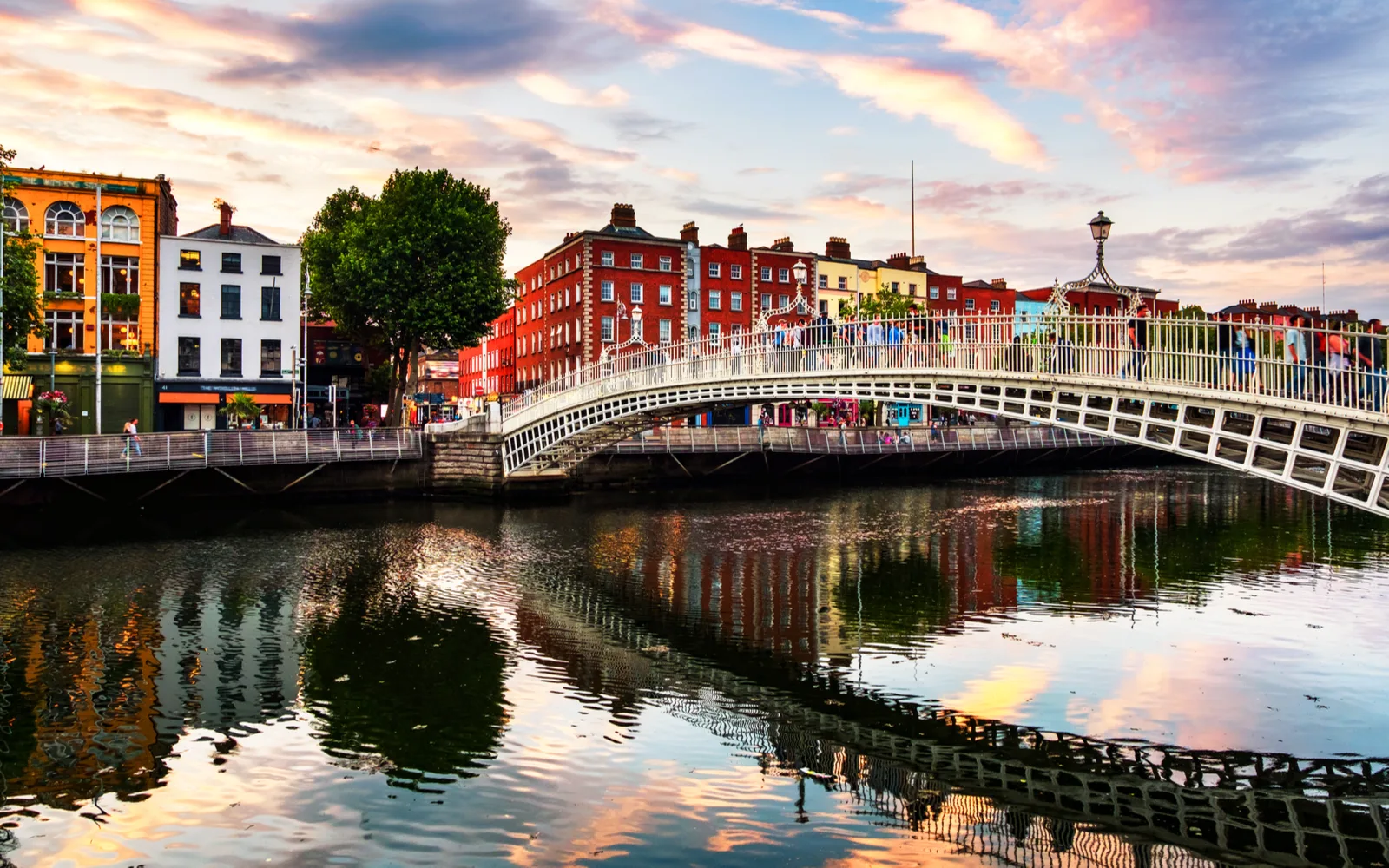What's the best time to visit Ireland?
The best time to visit Ireland is between June to September for warm, drier weather and a full calendar of cultural festivals. Highs in the mid-to-upper 60s create ideal conditions for sightseeing in cities like Dublin, hiking the Dingle Peninsula and discovering its secluded beaches, exploring the countryside and medieval castles, and enjoying lush, green landscapes at scenic national parks and Irish botanical gardens.
Ireland is a land of fairytale castles and medieval architecture, ancient ruins and legends, indescribably green and rugged coastal landscapes, and vibrant cities that marry the past with the modern world seamlessly. If you’re planning to see it for yourself soon, what’s the best time to visit Ireland?
The right time to go to the Emerald Isle really depends on your goals for the trip. Are you looking for the best weather for sightseeing and hiking? The cheapest prices? The least busy period with smaller crowds?
If you’ll be out exploring the countryside, touring majestic old castles, and enjoying outdoor activities, the best time to visit Ireland will be different for you than if you’re sniffing out the best deals on accommodations and flights or trying to avoid the peak season crowds.
We’ll show you the best time to visit Ireland overall, along with the cheapest, least busy, and worst times to go so you can pinpoint the perfect travel dates for your trip.
You’ll see average hotel and flight prices, things to do, festivals and events to check out, and weather conditions for each month. Let’s take a look at the best periods for a visit!
Overall Best Time to Visit Ireland
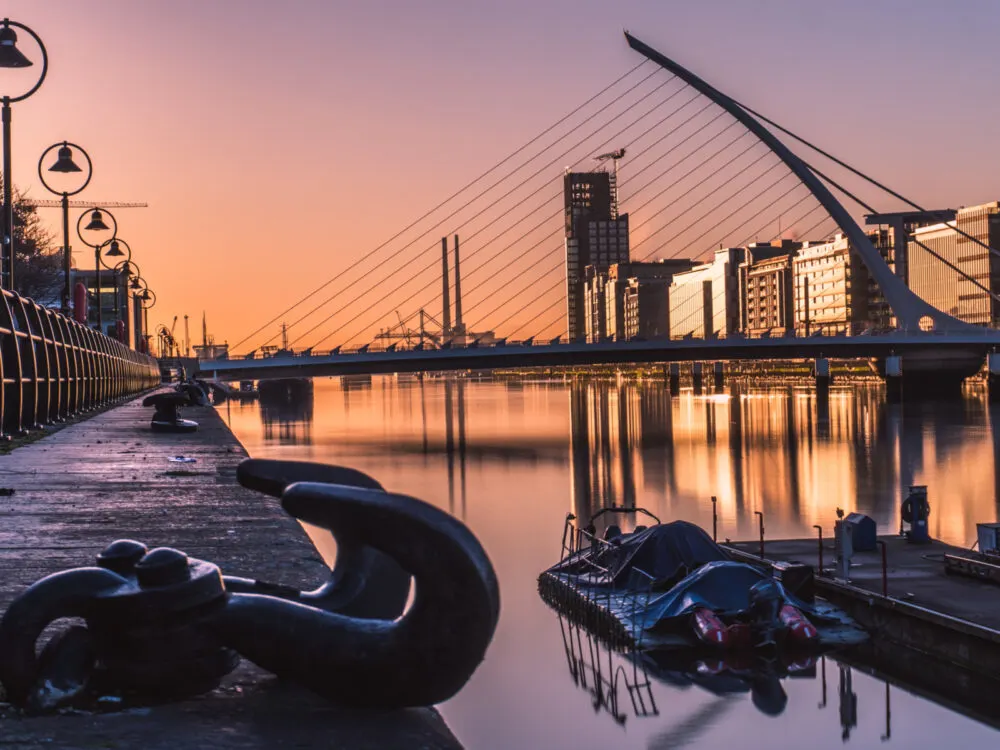
Michael Kellner/Shutterstock
The best time to visit Ireland is during the summer, from June to September. These months offer Ireland’s warmest weather with less rain, tons of festivals, and perfect conditions for sightseeing and exploring the countryside.
If you’re picturing Ireland as a dreary country with forever-cloudy skies and an endless drizzle, the balmy summer months will change your mind. It’s the best time to visit Ireland overall, whether you’re exploring Dublin or venturing out to famous castles in County Cork and Galway.
Here’s a look at average daily highs and rainfall during the summer months across Ireland, the driest, warmest months of the year on the Emerald Isle:
- June: 61–64°F; 8–10 rainy days
- July: 63–67°F; 8–12 rainy days
- August: 63–66°F; 9–13 rainy days
- September: 60–63°F; 9–12 rainy days
With highs in the mid-to-upper 60s, conditions are just right for exploring historic sites, walking famous pedestrian streets to shop and experience life in traditional pubs, and enjoy the green and scenic scenery of Ireland’s rugged coasts and green hills and dales.
It’s our favorite time to visit Dublin and its many historic sites and buildings, like 18th-century Kilmainham Gaol prison-turned-museum, 13th-century Dublin Castle, and the beautiful Gothic 12th-century St. Patrick’s Cathedral. Stroll down Grafton Street on the south side of the city for restaurants and pubs, shops, and entertainment.
With over 300 golf and links golf courses in Ireland, there’s always a course nearby if you’re up for a round of golf during the warmest months of the year. Waterville Golf Links and Royal County Down are some of the most prestigious and challenging.
This is a great time to do some hiking in Ireland’s scenic parks and countryside, too. Check out Killarney National Park in County Kerry to hike to waterfalls and historic sites on pretty trails through mossy woodlands and hills.
Hike the 7-mile Gap of Dunloe trail to pass through a glacial valley between mountains as old pastureland, rugged cliffs, and wildflower meadows flank you on either side.
The only thing you won’t find this time of year are cheap prices on hotels or flights. Since it’s the peak season, you’ll pay a little more to travel and stay in Ireland. Take a look at the Google Hotels and Skyscanner data below:
- June: $191/night; flights from $332
- July: $163/night; flights from $462
- August: $161/night; flights from $333
- September: $166/night; flights from $307
July is the most expensive month for flights to Ireland, but September stands out as one of the cheapest months to fly to the island from the U.S. July, August, and September are much cheaper at hotels than June, so it’s possible to find great deals in summer with a little research.
Since you’ll be here during festival season, there are tons of events and cultural celebrations happening between June and September. Here are some to consider around the country:
- Bloomsday Festival (Jun) in Dublin transforms the streets and people to another time, with attendees dressing in Edwardian fashion (straw boater hats aplenty) with performances and readings from the 1922 Ulysses novel by James Joyce
- Cork Midsummer Festival (Jun) features plays, art, and music events on multiple stages in Cork near the middle of June, the traditional midsummer
- Dublin Pride (Jun) decks the city’s streets, bars, and music venues in rainbow colors in support of the LGBT+ community in and around Dublin with parades, performances, food fairs, and contests
- Longitude Festival (Jun/Jul) in Dublin is one of Ireland’s biggest music festivals of the year, bringing headliner acts to the city with 2 days of performances on multiple stages
- Galway Film Fleadh (Jul) in Galway city celebrates local Irish and international filmmakers, actors, and actresses with screenings and discussions at one of the biggest film events in the country
- Kilkenny Arts Festival (Aug) brings outdoor theater performances, artwork, dance, classical music, and traditional arts to Kilkenny with over a week of performances
- Waterford Walls (Aug) in Waterford is the country’s biggest street art festival with a massive, open-air gallery featuring thought-provoking murals and artwork in outdoor settings
- Dublin Fringe Festival (Sept) is an almost month-long art festival that’s focused on pushing the envelope with eclectic and provocative performances, dance, music, and artwork
- Galway International and Clarinbridge Oyster Festival (Sept) in tiny Clarinbridge Village and larger Galway nearby celebrate the oyster harvest with festivals offering fresh oysters and seafood, music, and performances
With the best weather you can ask for across Ireland, the most festivals of the year, and some months (August and September) with affordable prices on accommodations and flights, the summertime is the best time to visit the country overall.
Don't waste your hard-earned money. Get the best deal on your Ireland trip by bundling a flight + hotel with Expedia.com!
- Options for all travel styles & budgets
- Price match guarantees
- Exclusive last-minute deals
Cheapest Time to Visit Ireland
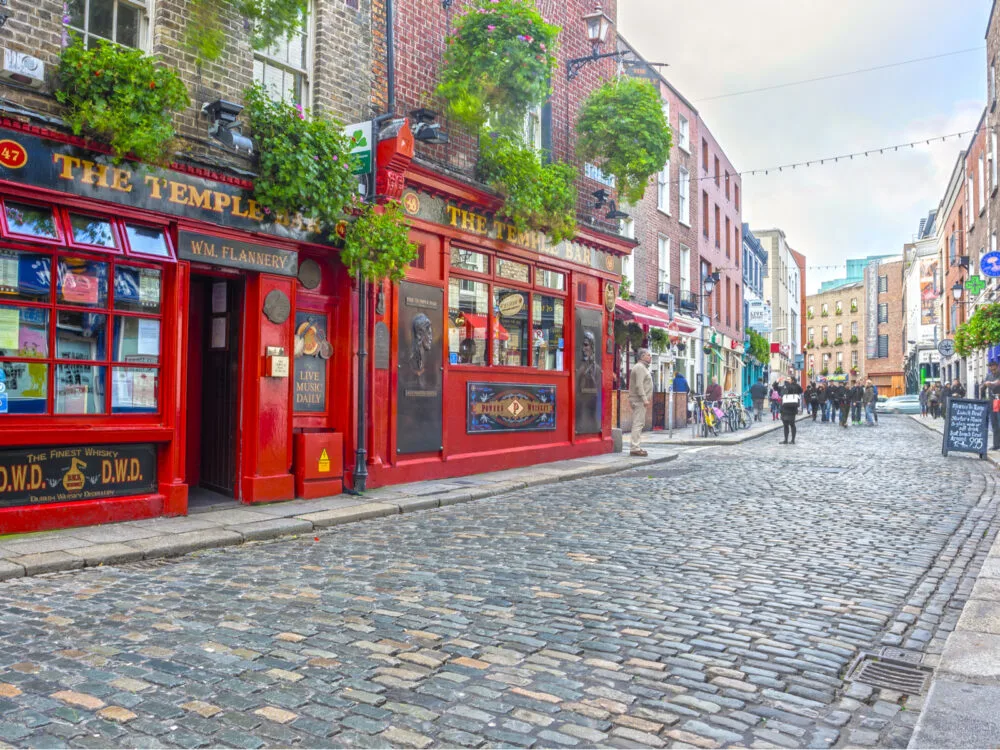
Aitormmfoto/Shutterstock
The cheapest time to visit Ireland is between December and March. Low temperatures, heavy rains, and fewer Irish events and festivals make for a less exciting visit, but lead to drastic reductions in prices on accommodations across Ireland.
The winter and early springtime in Ireland can be a bit gloomy with cloudy skies, rain that doesn’t seem to slack off for days at a time, and a less vibrant atmosphere in big cities like Dublin outside of the summer festival season.
- December: 46–48°F; 12–16 rainy days
- January: 45–47°F; 12–16 rainy days
- February: 46–48°F; 9–13 rainy days
- March: 49–51°F; 9–13 rainy days
December and January are two of the wettest months of the year in Ireland, so it’s essential to make indoor plans in case your outdoor activities don’t pan out. Even February and March are quite rainy with up to 13 rainy days each month.
Add the chilly temperatures (highs that don’t get above 50°F until late March) to the mix, and you can see why this period is less popular to visit Ireland. But savvy travelers will find the best prices of the year between December through March for a more affordable trip.
Here’s a look at Google Hotels data for each month during the cheapest period to visit. While they’re not the cheapest months to fly to Ireland, you’ll save plenty on your hotel and still find airfare below annual peak prices:
- December: $127/night; flights from $335
- January: $118/night; flights from $328
- February: $122/night; flights from $322
- March: $133/night; flights from $348
January is one of the cheapest months to visit Ireland overall with the lowest average hotel prices and mid-range airfare costs. May is another cheap time to visit with the lowest airfare (round trip flights as low as $305, according to Skyscanner) and affordable hotel prices (averaging $159/night).
So what you can do during the dreary winter in Ireland? Plenty! Make the most of the cooler temperatures and rainy conditions by finding things to do indoors and out.
It’s great weather to cozy up with a pint and hearty stew or fish and chips in a traditional Irish pub, like O’Sullivan’s Bar in Crookhaven, the 18th-century Tynan’s Bridge House in Kilkenny near Kilkenny Castle, or the iconic Temple Bar Pub in Dublin (come during the late January Tradfest with traditional Irish music).
Use the cool weather to layer up and enjoy hiking in beautiful areas, like Diamond Hill in Connemara National Park, the scenic Spinc Trail in Gledalough near Dublin, or the 2.5-hour trek from Bernie’s Cafe to a lighthouse on County Cork’s Lighthouse Loop.
Avoid the chill by spending hours touring museums and historic sites in Irish cities, like the Guinness Storehouse and the Little Museum of Dublin (both in Dublin) or Cork City Gaol and Blackrock Castle (both in Cork).
If you’re going outside of major cities, check out the impressive Bunratty Castle with 15th-century roots. It’s surrounded by a huge recreated medieval village complete with shops, eateries, and a park in County Clare.
While there’s not as much going on around Ireland between December and March, there are still some really notable events to look forward to, like massive St. Patrick’s Day celebrations, cultural festivals, and holiday events:
- Christmas Celebrations (Dec) include parades, winter festivals, cities decorated in holiday cheer and lights, Christmas markets, and food fairs/tasting events around Ireland, especially in cities like Dublin, Waterford, Galway, and Cork
- New Year’s Eve/Day (Dec 31–Jan 1) is celebrated around the country with packed pubs and bars counting down to the New Year, lavish parties, fireworks displays in larger towns and cities, and a traditional New Year’s Day swim in southern Ireland
- Cathedral Quarter Arts Festival (Jan) in Belfast’s Cathedral Quarter is a big event with comedy, theater, music, and literary performances and readings during a multi-day festival
- Temple Bar Tradfest (late Jan) celebrates Ireland’s traditional music at famous venues in Dublin, like St. Patrick’s Cathedral and Pepper Canister Church
- Jameson Dublin Film Festival (Feb) spans 10 days of 120+ films being highlighted from Irish and international filmmakers
- Mother Tongues Festival (Feb) in Tallaght honors the Gaelic language and its historic use in Ireland with classes, workshops, storytelling, performances, and food fairs
- St. Patrick’s Day Celebrations (Mar 17) across the country — the biggest parades and events are in Dublin — bring merrymaking, drinking, music, reenactments of the saint’s life, and traditional food in seas of green clothing to Ireland
With the chance to book your trip to Ireland at a lower price point, winter and early spring can be a great time to visit Ireland. Just account for the cold weather and rain when you’re making your plans!
Least Busy Time to Visit Ireland
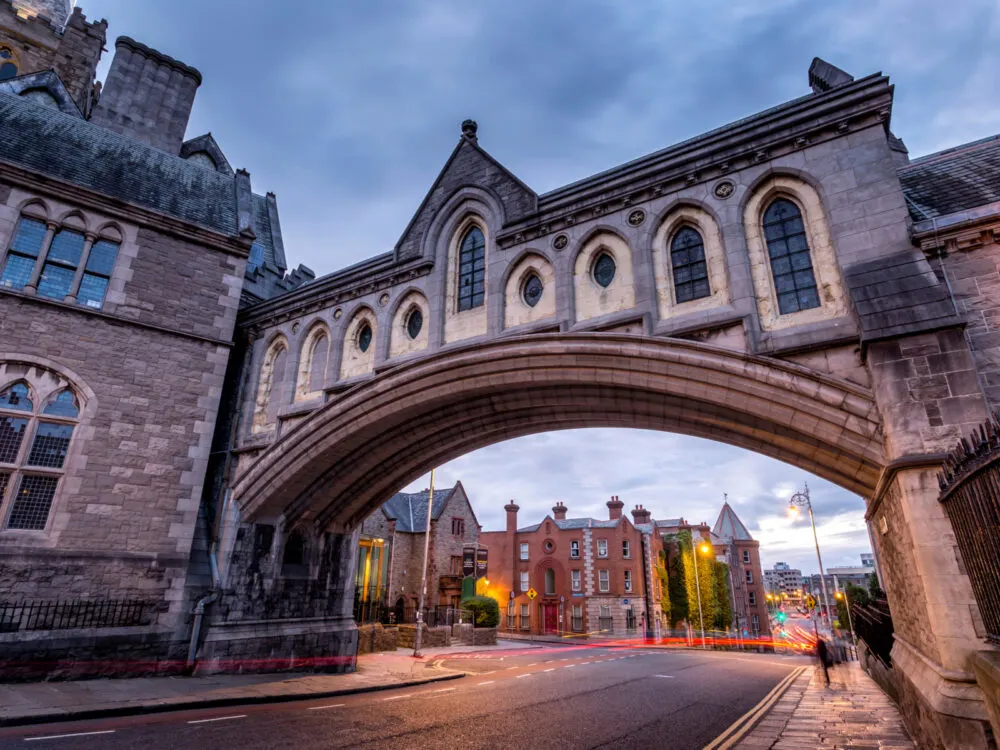
Kanuman/Shutterstock
April and May are the least busy months to visit Ireland. Mild April sees the least visitors of the year in Ireland, while warmer May is quiet as Ireland gears up for the summertime festival season.
If you find it hard to enjoy a vacation when the city or attractions you’re visiting are inundated with crowds, April and May will offer sweet relief from the busy peak season in Ireland. You’ll find the fewest visitors of the season during these shoulder season months.
It’s amazing that more people don’t visit Ireland this time of year, because it’s still part of the drier season and temperatures are pleasantly warm:
- April: 53–56°F; 8–10 rainy days
- May: 57–60°F; 9–10 rainy days
During this period, the rolling hills and dales of the countryside are alive with green color and wildflowers burst into bloom in the meadows and parks. Cities like Dublin and Kilkenny are gearing up for festival season and enjoying prime sightseeing weather, but still uncrowded.
Visit some of Ireland’s most famous gardens as the spring wakes up dormant plants to colorful blooms and lush greenery along pretty pathways, like the National Botanic Gardens of Ireland in Dublin, Belfast Botanic Gardens, and Altamont Gardens in County Carlow.
This is one of the best times to tour a working sheep farm, like Glenkeen Farm, for herding demos, Irish music and dance, hearty home-cooked meals, and famine tours through old homesteads.
With smaller crowds at Ireland’s most popular attractions, this is our favorite time to visit Blarney Castle to lean backward from a high-up window and kiss the Blarney Stone. During the warmer peak season, lines and wait times can get crazy, but it’s much better during the springtime.
You’ll find the popular Dingle Way trail less-crowded and gorgeous in springtime on the Dingle Peninsula. The trail leads from Tralee (County Kerry) to charming Irish villages along the coast, sandy Maharees beaches, mountain foothills, archaeological sites, and farmland before looping back to the starting point.
Remarkably, May (with its warm weather and drier conditions) is actually one of the cheapest months to visit Ireland with the lowest round trip airfare we could find and affordable prices on accommodations (sourced from Google Hotels):
- April: $211/night; flights from $324
- May: $159/night; flights from $305
If you’re hoping to check out some Irish festivals and events this time of year, you’re in luck! There are a few must-see celebrations happening in April and May around the country:
- Galway Food Festival (Apr) brings food trucks and local restaurants together with in-house and street tasting events, cocktail classes, open-air markets, and food trails through the town
- Celtic Beltaine Festival (late Apr–May) traditionally occurs on May 1, the halfway point between the spring equinox and summer solstice, marked with bonfires, dancing, and storytelling on the Hill of Tara in County Meath
- May Bank Holiday (early May) is the first Monday in May, when most businesses and all banks and public offices are closed and attractions, parks, weekend destinations, and cities may be packed
- Dublin Dance Festival (mid-May) includes 12 days of dance performances by Irish and international dancers showcasing traditional and modern styles
With the chance to experience Ireland’s mild springtime weather and events without the crowds of peak season and more affordable prices, visiting in April or May is sure to delight you.
Worst Time to Visit Ireland
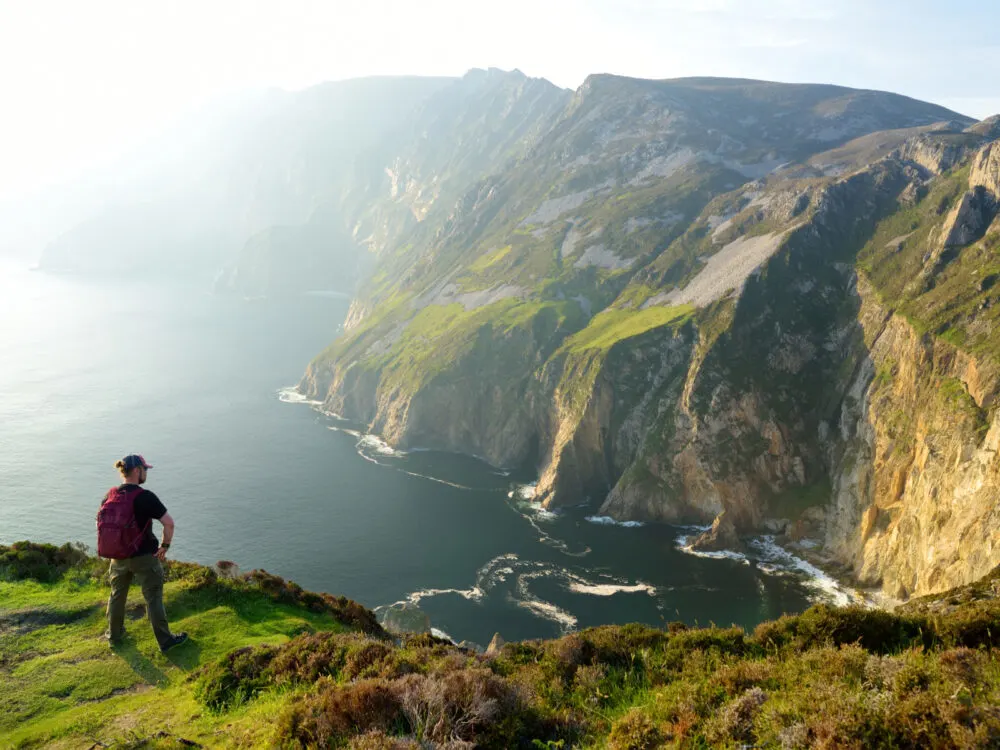
MNStudio/Shutterstock
The worst time to visit Ireland is the winter (December to February) for the cold, blustery weather and rain. July and August could be the worst time to visit if you’re on a tight budget or trying to avoid crowds.
There are pros and cons for both periods — winter is amazingly cheap to visit and less busy, but very wet and cold. Summer offers the warmest and driest weather with lots of cultural festivals and fun events across Ireland, but is more expensive and crowded.
- December: 46–48°F; 12–16 rainy days
- January: 45–47°F; 12–16 rainy days
- February: 46–48°F; 9–13 rainy days
- July: 63–67°F; 8–12 rainy days
- August: 63–66°F; 9–13 rainy days
Deciding which season will be the worst for you means taking your travel goals and ambitions into consideration.
If you’ll be doing lots of sightseeing, hiking, and urban exploration, visiting Ireland in winter will be a challenge. Short daylight hours, cold temperatures, and frequent rains limit the hiking trips you can take and make sightseeing less comfortable. There are also fewer outdoor festivals and events in winter.
If you’re trying to avoid the biggest crowds or the highest prices on hotels and flights, July and August are the worst months to visit Ireland. As the busiest and priciest months of the year, the best attractions, hotels, and destinations will be packed and booked up early with long lines at attractions and peak season pricing.
Winter hotel and flight prices in Ireland vary between winter and late summer, as you can see below with Google Hotels and Skyscanner data:
- December: $127/night; flights from $335
- January: $118/night; flights from $328
- February: $122/night; flights from $322
- July: $163/night; flights from $462
- August: $161/night; flights from $333
But there’s a solution if neither winter or late summer are quite right for your trip. Consider planning a visit between September and October instead. You’ll get smaller crowds than summer, though it’s busier than winter, along with lower prices and plenty of seasonal events.
Fall is a fine time to travel to the small village of Clarinbridge near Galway as the local oyster season reaches its peak. Stop in charming antique stores, walk through well-manicured gardens, and explore traditional pubs in this small town.
As one of the cheapest places to fly into Europe in fall, Dublin makes a great place to travel on a budget during the autumn shoulder season if you want to explore historic attractions and architecture with an array of trendy eateries and traditional pubs around.
Since we’ve already covered the most popular events in Ireland in winter (under Cheapest Time to Visit Ireland) and summer (under Overall Best Time to Visit Ireland), take a look at the goings-on during the “just right” fall shoulder season:
- Dublin Fringe Festival (Sept) is an almost month-long art festival that’s focused on pushing the envelope with eclectic and provocative performances, dance, music, and artwork
- Galway International and Clarinbridge Oyster Festival (Sept) in tiny Clarinbridge Village and larger Galway nearby celebrate the oyster harvest with festivals offering fresh oysters and seafood, music, and performances
- October Bank Holiday (late Oct) is the last Monday in October, with local banks, businesses, and public offices closing to give locals a long weekend for the fall season
- Dublin Theatre Festival (Oct) features some of Ireland’s best-known playwrights and traveling theatre performers at this international-scale event at the oldest theatre festival in Europe
For some travelers, winter is the worst, and for others, it’s the crowded and costly late summer. But you can always go during the affordable and less busy spring season (April and May) or in-between fall shoulder season (September and October) to hit the sweet spot for your trip to Ireland.
Things to Consider When Visiting Ireland
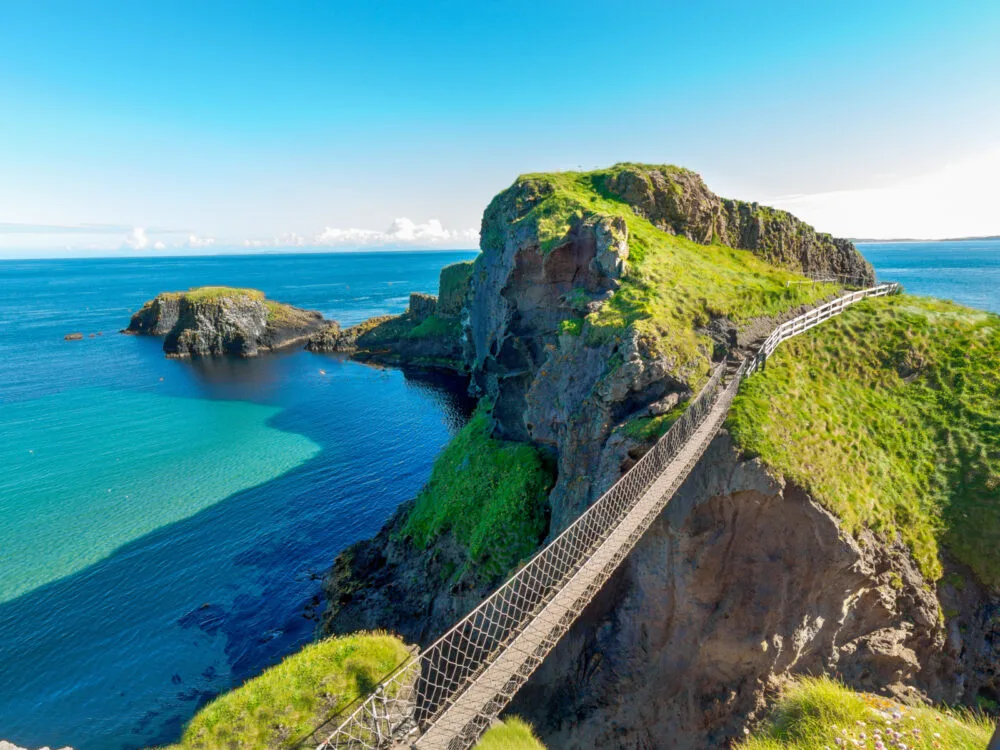
Lautz/Shutterstock
Ireland offers unique experiences during each season, and choosing the right time to visit this storied island country is only part of planning a memorable and enjoyable trip. Here are a few other considerations to keep in mind.
- Rainy days happen year-round. Summer is drier and warmer, but even the “dry season” in Ireland experiences some rainfall — up to 13 rainy days each month! You won’t be able to avoid rain entirely, but make room in your itinerary for some indoor activities and tours to avoid letting the weather throw you off-track.
- Book in advance for peak season travel. Ireland is popular to visit during the warm summer months and the best hotels, upscale restaurants, and attractions that require tickets tend to book up well in advance. Don’t procrastinate once you know your travel dates and start booking your itinerary as soon as possible.
- You might need to rent a car. If you’re just visiting Dublin or a larger city that’s well-connected with public transportation, a rental car won’t be necessary. But if you want to venture into Ireland’s charming villages, coastal towns, and castles in the countryside, you’ll need to rent a car (and drive on the left side of the road). A U.S. license is valid in Ireland for up to 12 months.
- Build a realistic itinerary. Google Maps’ My Map feature can help you plan an itinerary that won’t run you ragged in Ireland. Keep a list of your favorite cities and attractions handy, plot them on your map, and note which areas are closest together. It’ll help you identify a good route to take according to where you’re flying in (likely Dublin) and how long you’ll be in Ireland.
- Know when and how to tip. Waitstaff, tour operators, and hotel staff should be tipped according to your total bill and the quality of your service (roughly 10% to 20%, or €1–€2 for hotel staff) in Ireland, but it’s not customary to tip for bar service at a pub or on hop on/hop off tours. You can always leave a tip if the service was great!
Frequently Asked Questions
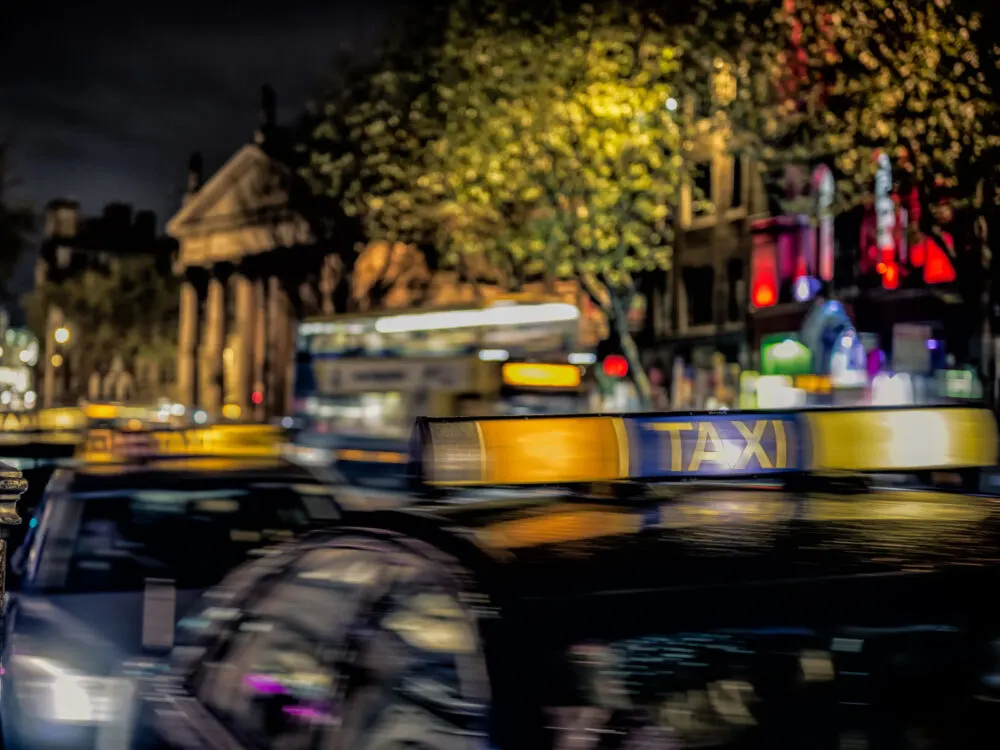
Massimofusaro/Shutterstock
Some of the most common questions other travelers have about visiting Ireland might answer questions you’ve been mulling over. Take a look at the most frequently asked questions below to learn more.
What is the best month to go to Ireland?
August is the best month to go to Ireland with warm temperatures in the upper 60s, as few as 9 rainy days, and affordable prices on hotels (rooms average $161/night). Round trip flights to Ireland start around $333 in August and events like Kilkenny Arts Festival and Waterford Walls Street Art Festival make it a perfect Irish month in terms of weather, prices, and things to do.
What is the cheapest time of year to visit Ireland?
December to March marks the cheapest time of year to visit Ireland with the lowest nightly rates on hotels across the country, ranging from $118--$133/night on average. Flight prices aren’t at their lowest during the rainy, cold winter (May is the cheapest month to fly), but start at $322 round-trip from the U.S.
What month is the rainy season in Ireland?
The cooler months of October through March are the rainy season in Ireland, when monthly rainy days range from 9 to 16. November, December, and January are the wettest months of the year across Ireland with over 2 weeks of rain each month on average. Even the dry season experiences 8 to 13 rainy days, but sees less rainfall overall.
What month is the cheapest to travel in Ireland?
May is the cheapest to travel to Ireland with the lowest prices on round-trip airfare from the U.S. Flights can be found as low as $305 round trip to Ireland during May, while hotel rooms cost $159/night in Ireland on average this month. January is the cheapest month for hotels in Ireland with average nightly rates around $118/night.
How many days do you need in Ireland?
You need at least 5 days in Ireland if you’re keeping your visit to one major city or destination, like Dublin or Kilkenny. Add 2-3 days for each additional destination you want to add to your trip, looking at 7-14 days to move around the country to explore different cities, castles, parks, and natural destinations.
So, What’s the Best Time to Visit Ireland?
If you’re ready to be transported to another world or place in time, you’re on the right track with a trip to Ireland. The palpable history in Ireland makes it one of our favorite countries to visit in Northwestern Europe — but only if you come during one of the best periods to visit.
For prime weather that’s warm and drier, that’s summertime between June and September. For cheaper prices on hotels and flights, the best time to visit Ireland is between December and March. If you want to avoid crowds, come between April and May.
You might find winter the worst time to visit if you want to spend time outdoors or sightseeing. July and August can be the worst if you’re on a tight budget or want a less-crowded experience, so September through October is another great time to visit without any of these issues.
No matter when you travel to Ireland, you’re off to a great start after learning what you can expect during each travel season. Align your weather, pricing, and activity expectations with your potential travel dates to enjoy the most memorable Irish adventure!



